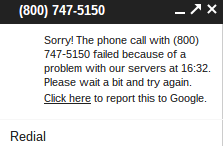Presenting with a Chromebook
I decided to use my Samsung ARM Chromebook for a presentation at Brighton Pi last night. It did not go well.
Creating the presentation
Using Google Docs instead of Powerpoint was pretty straightforward. I never do much fancy with my slides – usually just a visual anchor or a few bullet points, so no real challenge. I was able to find functions easily, and in general the interface felt simpler and cleaner. I wouldn’t be surprised if I was quicker making the presentation in Google Docs. I did most of the work on my main Windows machine, but when I needed to do a few tweaks it was easy to modify things on the Chromebook. So far so good.
Preparation
Working Offline
I didn’t know whether I’d have network access at the venue, so it was crucial that I got Drive working offline. It was not obvious how to do this, and searching around found me lots of conflicting instructions. I don’t really understand why offline capable isn’t the default. I also don’t understand why the Available Offline column doesn’t seem to do anything in the Chromebook file manager thing.
HDMI
I’m not sure how ubiquitous HDMI capability is yet for projectors etc. A lot of venues I’ve spoken at have been geared up for VGA and that’s it. I had some confidence that I’d be OK this time as the Raspberry Pi also has HDMI output, but I checked in good time so I could revert to another laptop with VGA if need be.
Unstable – they weren’t kidding
I switched my Chromebook to the Dev – Unstable channel in order to get the Chrome RDP app working. This has turned into a bit of a disaster on few fronts:
- My Chromebook now randomly locks up and needs to be power cycled to get going again.
- Google Voice dialling from within Gmail has stopped working. No matter what number I dial I get a message like this:

- I may have a working RDP client, but it doesn’t seem to play nicely with the SSH tunnels I use to secure access to my network, rendering it pretty much useless.
On the night
No mirror
The Chromebook will only mirror to an external display (e.g. the projector I was using) if it supports the same resolution as the LCD screen. 1366×768 might be a popular resolution for 11″ and 12″ laptops, but I’m guessing it’s not so widely supported for beamers, plasmas etc.
Unlike Powerpoint it seems that Google Docs doesn’t have a feature where it will present the slides on multiple screens (like the one in front of you and the one behind you).
Replug HDMI – hang
The irony – it hurts – my Chromebook just crashed as I was about to write about my Chromebook crashing.
I did a number of demos with the Raspberry Pi that required me to unplug the HDMI cable from the Chromebook and plug it back in later. Every time I did that the Chromebook hung.
It hung a bunch of times without provocation too.
This very much disrupted the flow of my presentation.
At least sharing is easy
When I got home I made the presentation public. It was loads easier than uploading stuff to SlideShare (though in the interest of curation I should probably put something there too).
Conclusion
I’m glad I was presenting in front of a small and friendly audience, and that there were plenty of questions to carry me through the numerous restarts. At least the Chromebook doesn’t take minutes to reboot. The instability is maybe my own fault for being impatient and going onto a dev build, but the dual display stuff needs sorting out. I expect it will be a while before I try this again.
Filed under: could_do_better, grumble, Raspberry Pi, technology | 1 Comment
Tags: beamer, Chromebook, crash, dual, freeze, google, Google Docs, hang, HDMI, lock up, offline, presenting, projector, screen, share, unstable
One Response to “Presenting with a Chromebook”